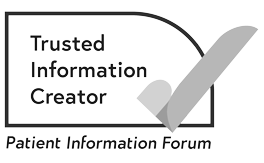CT urogram
On this page
What is a CT urogram?
A CT urogram is a type of CT scan. It looks at the kidneys, ureters and bladder.
A CT scan makes a detailed picture of the inside of the body. The picture is built up using x-rays taken by the CT scanner. The scan uses radiation, but this is very unlikely to harm you. It will not harm anyone you come into contact with.
Having a CT urogram
You will be told how to prepare for the scan. Before the scan, you can usually eat and drink normally. You may be asked to empty your bladder before the scan.
Before a CT urogram, you will be given an injection of a dye. This helps doctors see your bladder, ureters and kidneys more clearly. The dye travels through the bloodstream to the kidneys. The doctor looks at a screen to see the dye passing through the kidneys and ureters.
The dye may make you feel hot all over for a few minutes. Some people have a stronger reaction to the dye. Tell your doctor if you have asthma or are allergic to iodine as this could increase your risk of a reaction. You should also tell your doctor if you have kidney problems or diabetes. It is important to tell them if you take metformin.
You will need a blood test before the scan to check how well your kidneys are working.
You can usually go home once the scan is finished.
About our information
This information has been written, revised and edited by Macmillan Cancer Support’s Cancer Information Development team. It has been reviewed by expert medical and health professionals and people living with cancer.
-
References
Below is a sample of the sources used in our kidney cancer information. If you would like more information about the sources we use, please contact us at informationproductionteam@macmillan.org.uk
Ljunberg B, Albiges L, Bedke J et al. European Association of Urology Guidelines on renal cell carcinoma. 2023. Available from https://uroweb.org/guidelines/renal-cell-carcinoma
Powles T, Albiges L, Bex A, et al. Renal cell carcinoma: ESMO Clinical Practice Guideline for diagnosis, treatment and follow-up. Ann Oncol. 2024 May 22. Available from: https://doi.org/10.1016/j.annonc.2024.05.537

Reviewer
Consultant Medical Oncologist in Renal and Skin Cancers
Royal Marsden Hospital, London
Date reviewed

Our cancer information meets the PIF TICK quality mark.
This means it is easy to use, up-to-date and based on the latest evidence. Learn more about how we produce our information.
The language we use
We want everyone affected by cancer to feel our information is written for them.
We want our information to be as clear as possible. To do this, we try to:
- use plain English
- explain medical words
- use short sentences
- use illustrations to explain text
- structure the information clearly
- make sure important points are clear.
We use gender-inclusive language and talk to our readers as ‘you’ so that everyone feels included. Where clinically necessary we use the terms ‘men’ and ‘women’ or ‘male’ and ‘female’. For example, we do so when talking about parts of the body or mentioning statistics or research about who is affected.
You can read more about how we produce our information here.



